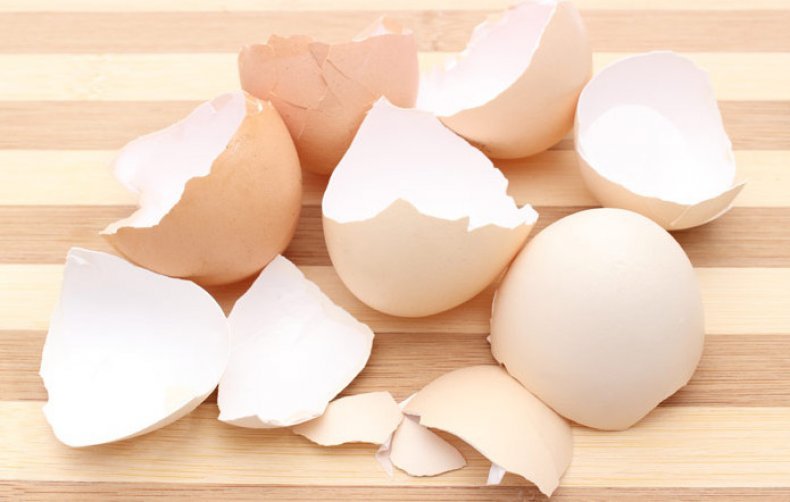Make household waste usable for the garden
A lot of food leftovers end up in the bio bin or on the compost. Some also contain valuable nutrients that can be ideally used as fodder for vegetable plants. In addition to water and light, nutrients are an important growth factor. Especially the heavy-consuming vegetables such as pumpkin, cucumber and courgettes are happy about additional feed in the form of fertilizer during the gardening season.
Fertilizer from your own kitchen is a simple, quick and particularly environmentally friendly way to support vegetable plants.
You should pay attention to the needs of your vegetable plant. Coffee grounds and egg shells complement each other very well and provide the nutrients for different plants.
Coffee as a fertilizer – miracle product for your vegetable garden

Repels pests and provides nutrients
Coffee is drunk a lot and with pleasure, and there is always coffee grounds, which you can collect and use as fertilizer. Coffee grounds fertilizer is high in potassium, phosphorus and nitrogen, which are substances your plants need for healthy growth.
Simply sprinkle the cooled coffee grounds next to your rows of vegetables, then work them into the soil so they can work their magic close to the roots.
Tip: Don’t you drink coffee yourself or don’t want to collect coffee grounds for several days? Ask at a coffee shop near you! Large quantities accumulate there every day and they will certainly fill something into a can you have brought with you.
Coffee grounds repel ants and snails
Ants and snails do not like the smell of coffee and avoid places where coffee grounds have been placed. Especially with snails it is very effective, at least until the next rain. Therefore, we recommend that you spread out coffee grounds rather than setting up a beer trap.
Fertilize with egg shells
Neutralize acidic soil again
Egg shells are the top lime supplier for the garden. A calcareous fertilizer allows your vegetable plant to easily absorb all other minerals from the soil. Your beetroot, carrots, beans and peas as well as numerous herbs will be happy about an additional addition of lime.
You should pulverize the shells so that the lime from the eggshells is quickly accessible to the plants. This can be done in a mortar, blender or with a blender. Leave the eggshell powder in the water for a few hours and use it to water your lime-loving plants.
Tip: Egg shells are also often used against snails in the garden. They don’t like the sharp edges of crumbled shells and avoid them. However, coarse egg shells cannot serve as a source of lime for the plant, since the shell takes too long to decompose to be used as fertilizer this season.
At a glance – fertilizing with eggshells
Nutrients contained: lime, access to other minerals
Ideal for: beans, peas, chard, carrots, beetroot, black salsify, onions, chives and many other herbs
Not suitable for: cucumber, tomato, spinach, pumpkin (These plants react sensitively to the direct addition of lime. These beds can be enriched with lime in the autumn.)
Amount: apply approx. 100 g to 1 m², twice a year
Make nettle manure yourself

Prepare nettle manure
Fill a barrel or barrel about two-thirds full with the coarsely chopped nettle plants and pour in rainwater to about a hand’s width below the rim. Cover the jar with wire mesh to prevent birds from falling in, or place a large branch or board in the bin to help birds find their way out. The addition of a handful of rock flour can bind the odor development somewhat. Stir the manure every 2-3 days. If the liquid has turned dark after about two weeks and no longer foams when stirred, your manure is ready.
After just a few days, the fermentation process begins, which, however, is accompanied by a significant odor development. If you have the opportunity, you should set the vessel a little apart.
Spread liquid manure
Dilute the manure with water in a ratio of 1:10. It is best to use the watering can without a watering attachment so that you can apply the liquid manure to the spot where the plant comes out of the ground. Plant manure should not be applied in sunshine, as it can otherwise burn the plants. Due to their high silica content, manure made from stinging nettle or horsetail is also suitable as a remedy against aphids if you spray your plants with it as a preventive measure or after the infestation has started in the appropriate places. But please remember to dilute the liquid manure.
Alternatives to preparing liquid manure yourself
If you prefer to take it easy, then use the ready-made extract without much effort and waiting. You can simply add the nettle pellets to the irrigation water.
At a glance – fertilizing with nettle manure
Nutrients included: nitrogen, calcium, iron, magnesium
Ideal for: tomatoes, pumpkins, zucchini, peppers, cauliflower, cucumbers, potatoes, many other types of cabbage
Not suitable for: peas, beans, lamb’s lettuce, all herbs
Quantity: like normal watering; about 2-3 times in the season
Cooking water from potatoes and other vegetables
High-quality irrigation water – but please without salt
When cooking vegetables and potatoes, the valuable nutrients are dissolved and remain in the cooking water. If this is not used in the kitchen, it is usually thrown away. Any nutrients in the vegetable can be used as nutrients by still growing vegetable plants.
It is important not to use salt when cooking, as it is poisonous for the garden and your plants. If you have cooked without salt, you can use the cooled cooking water to pour.
At a glance – potato water
Nutrients contained: magnesium, iron, phosphorus
Ideal for: all vegetable plants, especially rose plants and heavy feeders
Not suitable for: herbs
Amount: 3 – 4 times a year
